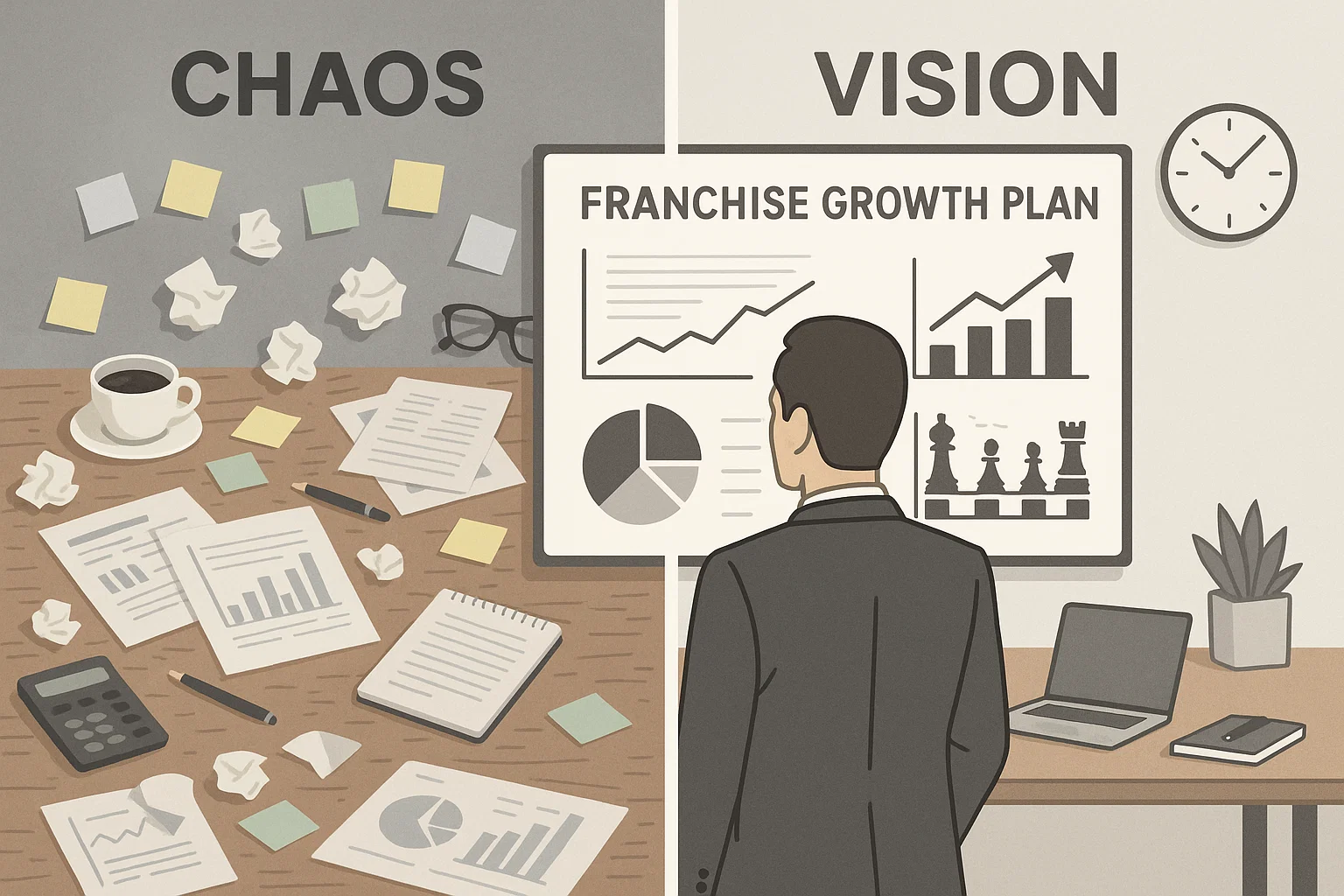Profit in franchising does not begin with a press release. It begins with the four walls of profit and loss. When a single unit produces strong cash flow after royalties, everything else compounds. New owners validate the story. Lenders underwrite with confidence. Private equity takes notice because predictable royalties look like an annuity backed by real stores and real guests. This is the quiet math that separates momentum brands from the rest.
THE HIDDEN ECONOMICS OF FRANCHISE SUCCESS
By FMM Contributor
A deep dive into unit economics, royalty structures, and how profitability at the unit level drives sustainable growth for franchisors
Franchising scales when a typical location generates attractive cash flow after paying the royalty and the marketing fund. That is unit economics in plain terms. It is the heartbeat of the system. A brand can sell many franchises based on vision, but only healthy store-level profits keep those locations open, pay operators, and fund reinvestment. Average unit volume, controllable cost discipline, and labor model fit determine whether a location throws off enough cash to fund growth without starving the operator.
Average unit volume matters because revenue sets the ceiling for all other factors. AUV is the total sales of a cohort of locations divided by the number of locations in that cohort. It is a directional signal, not a promise, but it indicates where the brand stands in its category. High AUV by itself is not enough, yet it often reflects strong demand and durable traffic. Restaurant industry league tables reveal how AUV distinguishes brands within segments, which is why candidates and lenders closely study it.
The Franchise Disclosure Document ties the public story to verifiable data. Item Nineteen, the financial performance representation, is where franchisors can disclose sales, costs, and profit data with a reasonable basis and proper substantiation. Not every franchisor discloses profit, but an increasing number provide more detailed information, including revenue, selected operating costs, and margins. Counsel and regulators emphasize the need for documentation and clarity when presenting this data, including the use of averages or medians to describe performance.
To assess unit economics, you begin with revenue lines and then move through the cost stack. After accounting for the costs of goods and labor, two key items define the franchise relationship at the unit level: the royalty and the brand fund. Royalty structures vary by industry, by maturity, and by strategy. Studies across thousands of brands reveal meaningful variation by sector, with a general range that anchors many royalties in the low to mid-single digits for food service and higher for business services, featuring outliers on either side. The right question is not which rate is highest or lowest. The right question is whether the rate supports strong store-level profit while giving the franchisor the resources to deliver value that defenders cannot match.
AUV and same-store sales are only as good as the conversion of revenue to cash. That is where labor model, occupancy, cost of goods, and local marketing efficiency do the daily work. Operators focus on throughput, waste, and staffing leverage. Franchisors focus on menu and pricing architecture, supply chain programs, and disciplined operating systems that reduce variance between best and worst quartile stores. When quartile spreads narrow, the brand becomes more bankable because lenders can underwrite to the middle rather than fear the bottom.
Royalty design influences behavior. A straight percentage aligns with growth in revenue and typically yields a predictable stream of cash for the franchisor. A tiered structure can reward scale and maturity. A minimum royalty protects the franchisor when revenue declines, but it must be sized carefully so that it does not suffocate a new operator during the ramp-up period. Marketing fund contributions, typically a percentage of sales, must be converted into measurable traffic. When store-level profit rises after these payments, the relationship strengthens because both parties benefit from the same levers.
Private equity is concerned with this math for a simple reason. Royalties produce recurring revenue with attractive margins at the franchisor level. When unit economics are strong and churn is low, the royalty stream looks like a durable annuity with built-in growth from new unit openings and price increases. Firms prize systems where the majority of earnings come from royalties, not one-time fees, because that mix supports higher exit multiples and withstands cycles better than development-driven stories. Thoughtful investors also watch risk factors, such as market saturation, cannibalization, and operator fatigue, and will discount brands that push growth into low-return trade areas.
Here is a forward view of the signals that matter most when you evaluate unit economics and the royalty engine that sits above it.
1. Quality of revenue
AUV and same-store sales are the first-order signals. You want an AUV that ranks well in its category, steady ticket, and healthy traffic trends. You also want Item Nineteen to be transparent about cohorts, time frames, and any exclusions, with medians and quartiles that reveal the distribution, not just the average. The strongest disclosures include revenue, selected operating costs, and unit-level margins, allowing candidates to model cash flow with confidence.
2. Cost structure resilience
Labor sensitivity is the stress point for many service and restaurant concepts. The best brands simplify tasks, eliminate wasted motion, and design stations so that fewer people can serve more guests without compromising the experience. Supply chain programs that reduce cost of goods volatility, along with footprint and equipment choices that moderate rent and utilities, compound into higher cash flow after royalties.
3. Royalty design and payback integrity
A healthy royalty rate is one that still allows a reasonable payback period on the initial investment after a realistic ramp. Founders sometimes underprice royalties to secure early deals, only to find that they cannot fund field support and marketing. Investors will mark down brands that rely on new franchise fees rather than healthy royalties from mature units. Simple structures with clear value exchange win trust.
4. Validation strength and variance control
Validation calls with existing operators tell you whether the AUV converts into owner cash. You listen for labor model sanity, supply reliability, technology ease, and marketing that actually drives guests to the door. You also look for dispersion. A tight variance between the top and bottom quartiles signals strong playbooks and real field support.
5. Growth runway and capital discipline
Private equity will pay for predictable royalties with a long runway of new units, but it will also test whether the brand protects trade areas and avoids cannibalization. The best systems manage pipeline quality with discipline, avoid overselling territories, and time price increases carefully to defend traffic.
6. Data fluency and operating cadence
Modern brands track unit economics in near real time. They tie product mix to labor minutes and margin. They share dashboards that help operators act on the right inputs, rather than just staring at outputs. Quarterly business reviews transform data into actionable plans, empowering owners who understand their numbers.
7. The story behind the numbers
AUV can be inflated by non-comparable events or pandemic whiplash. Real brand strength is evident in consistent comp growth, repeatable openings, and profitability that withstands wage and commodity fluctuations. Sound systems demonstrate sustainable cash flow after royalties across a diverse range of markets, not just in a select few flagships.
Why does all of this matter to the franchisor’s balance sheet
When store-level profit expands after royalties, franchisors see stable and growing royalty revenue. That is the foundation for field teams, technology upgrades, and brand building. Banks like predictable revenue. So do buyers. Industry reports indicate that franchising continues to outpace the broader economy in terms of unit growth and employment, reflecting the durability of this model when unit economics are favorable.
Why does all of this matter to private equity
Investors are drawn to the combination of asset-light growth and recurring revenue streams through royalties. In diligence, they will build a bottom-up view of unit economics, test Item Nineteen support, and run sensitivity cases on labor and food costs to see how quickly cash flow compresses. They will also assess leadership depth, development pace, discipline, and the ability to scale support functions without eroding franchisee margins. Over time, the most valuable brands maintain high royalty quality, low churn, and a long runway for new units that meet return hurdles. That is why the quiet details inside a single unit determine the premium a buyer will pay for the whole system.
How to apply this as a founder or growth executive
Start with the unit. Map your ideal day, part by part, and align labor with demand. Trim prep that does not create guest value. Engineer fewer touches. Lock in supply with scale partners who can ride volatility with you. Use your Item Nineteen to teach candidates how your operators make money. Show the math behind royalties by connecting support and marketing outcomes to store-level results. Track quartiles and close the spread with training and field coaching. Expand into trade areas where your model aligns with the labor and rent realities. And hold the line on candidate quality so that the brand never outruns its ability to support the people who pay the royalties that fund the dream.
© Gary Occhiogrosso, All Rights Reserved, Worldwide.
Sources
- Restaurant Business Online. Chains with the highest average unit volumes. Link
- QSR Magazine. Brands that earn the most per restaurant. Link
- FRANdata. Examination of average royalty fees. Link
- Internicola Law Firm. Item Nineteen financial performance representations. Link
- Drumm Law. Averages and medians in Item Nineteen. Link
- Jack in the Box franchising blog. What AUV means. Link
- FRANdata. Economic impact report for franchising. Link
- Franchise CPA. Why private equity loves franchising. Link
- Plante Moran. Why investing in franchising attracts private equity. Link
- Dru Carpenito. Big money in franchising and private equity. Link
- Greenwich Group International. The evolving landscape of private equity in franchising. PDF Link
This article was researched, outlined and edited with the support of A.I.




